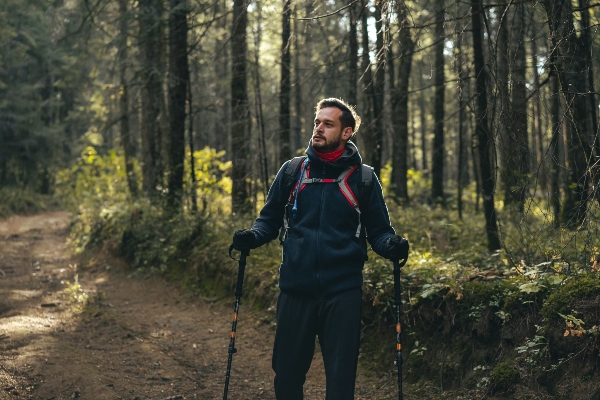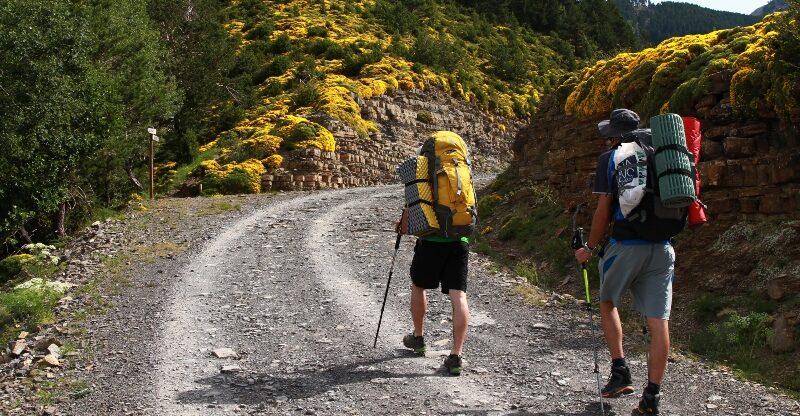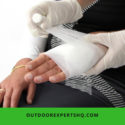Hiking With Bad Knees: How To Protect Yourself
As we grow older, we realize that hiking with bad knees is no easy feat. I look back in the past and wonder how my grandfather managed to hike up all those mountains when I was a child.
To me, it was nothing short of a miracle!
You see:
As I got older, I started to experience pains in my knee after walking long distances, which can feel troublesome at best.
Maybe my misspent youth skateboarding and climbing destroyed my knees? Or perhaps it’s the fact that I sit at a desk all day working?
Either way, I set out on a journey to discover ways that I could make hiking with bad knees more comfortable.
And today, I want to share with you the tips and tools I’ve found that can help you conquer hiking with bad knees:
5 Steps You Should Take When Hiking With Bad Knees
Okay, before I talk you through the steps I used to make life easier hiking with bad knees, I think I should leave a little disclaimer.
You need to understand I’m not a doctor; I’m just a hiker who happens to have bad knees. So, the tips I’m giving you are from my personal experience; it’s not medical advice!
You should always consult a doctor beforehand to see what they say about your medical condition.
Now we’ve got that out of the way, let’s take a look at some of these tips:
1. Make Sure You Warm Up
When we were young, we probably got away with a fair amount of skipping warm-ups. And while some of us escaped any significant injury, others weren’t that lucky.
But here’s the thing:
As we age, our body starts to feel stiff and is more prone to injury than it was twenty years ago. And this can be hard to hear; no one likes the idea of our body being unable to do what it once did.
But it’s an important lesson if you don’t want to damage your body further than it already has.
Gentle exercises help prepare your body for any physical exertion it will face. It’s like warming up an old car before you take it on a long journey; if you don’t warm it up, it will be clunky and might break down.

Spending a few minutes stretching your knees beforehand can make all the difference and reduce the amount of pain you feel while hiking.
2. Use A Knee Brace
One thing I found to help subdue the pain was wearing a knee brace while hiking. It provides extra support around your knee, which can be very beneficial.
Knee braces come in all shapes and sizes, which can vary between models, so you need to do some research if you want to find the right one for you.
In general, you have four types of knee braces on the market, but from my personal experience, I found the functional and rehabilitative ones to be the most effective.
Both work to support the knee while reducing movement, which helps reduce inflammation around the knee.
You must remember that wearing the type that matches your needs will make all the difference in reducing pain.
3. Get Yourself Some Hiking Poles
Some people like to claim walking poles are useless, but I can guarantee you they’re wrong. I spent a lot of time outdoors and even spent some time in university studying Adventure Sports.
So, why would I say these people are wrong?
Many people don’t realize that hiking poles aren’t designed to help you climb the mountain; they are used to support your weight on the way down.

Think about the last time you were walking down a mountainside. With each step you took down the mountain, your body did a weird little bounce at the knee.
And with a heavy backpack on, this bouncing movement stands out even more.
Well, this bouncing movement can damage your knees; if they’re already sore, it will only worsen. So, using hiking poles will help to evenly spread the load of your backpack and provide more support to your knees,
4. Wear Suitable Footwear For The Task At Hand
You might be wondering how wearing suitable footwear can help your knees; surely it only benefits your feet, right?
Well, the thing is:
Wearing the right shoes when you have a knee condition is vital. Not only will it save you a lot of pain, but it can prevent it from getting worse.
Ideally, you’re looking for hiking shoes that provide stability and thicker sole than usual. But just as importantly, the shoes need to be comfortable.
Here’s the thing:
Your shoes will be directly responsible for the load your knees take every step, so it pays to get the right shoes.
5. Choose An Easy Hiking Path
One of the things I’ve realized as I’ve gotten older is there is no shame in taking an easier hiking path than you usually would.
And while we might still have the adventurous wild side, we must remember that serious injuries can occur while hiking.
If you have bad knees, you should try a relatively flat hiking trail for you to take on. It doesn’t mean they can’t be adventurous; the track just needs to be easier on your knees.
You should also think about the length of the walk. Hiking for multiple days isn’t a good idea because you will trigger the pain over multiple days. Instead, gently ease yourself into longer hikes as your knees get stronger.
Final Thoughts & Takeaways
Even with bad knees, you don’t have to let them drag you down. As you can see, you can still enjoy days out on the mountain; you just need to be more careful and plan ahead.
If you stick to the tips I’ve mentioned above, you should have no problem being able to enjoy a day out hiking.
Just remember to take it easy, don’t be too adventurous, and consult your doctor beforehand to make sure it’s okay.









